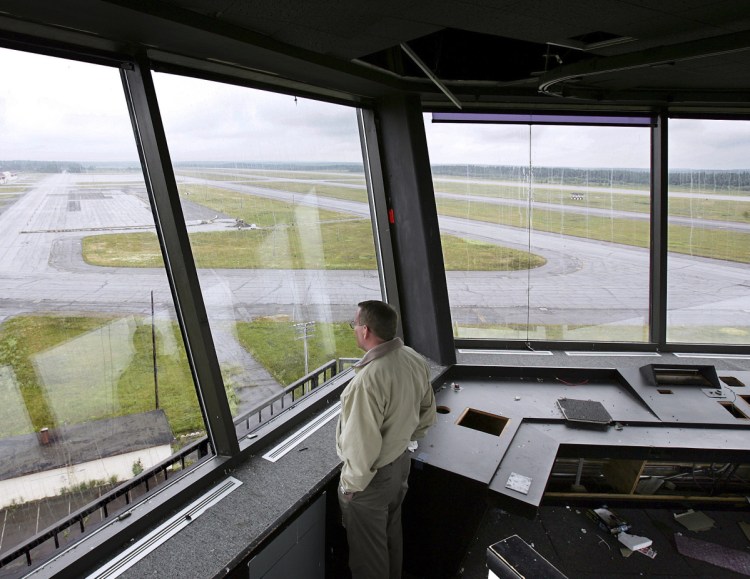BRUNSWICK — It might sound like a moonshot, but a group of science and space enthusiasts wants Maine to become America’s leader in sending tiny satellites into space.
The tentative plan for the ambitious project is to use a pair of former air bases as the homes of an operation that would launch CubeSat satellites, so-called nanosatellites no bigger than toasters. The former Loring Air Force Base in far northern Maine would serve as the launch site, while the former Brunswick Naval Air Station closer to the state’s busy coast would house mission control.
The effort’s architects aren’t just baking pie in the sky. Project director and Maine Space Grant Consortium executive director Terry Shehata has some powerful allies interested in getting the plan into orbit.
Maine Technology Institute has awarded $50,000 for a feasibility study, while Maine Space Grant Consortium, which is supported by the National Aeronautics and Space Administration, has committed more than $88,000.
The next step is to find out whether there’s a market for such a facility in Maine, a state with a small tech sector but lots of open sky to send satellites into.
“It does sound crazy, but why not?” Shehata said. “Why not see if people can get excited about investing in a new space economy that would be the tide that raises all boats?”
Backers will likely know by next fall if the project, which will take years and millions of dollars to complete, is possible, Shehata said. The work going on right now is focused on determining whether there is enough interest from the private sector to support a nanosatellite facility in Maine, and if there is, the development of the program itself would follow.
Shehata said he sees the Brunswick mission control facility as a business and science incubator with a strong component for children’s education. In fact, he likes the idea of collaborating with Maine high school students to build the satellites.
The project’s application to Maine Technology Institute calls the facility SpacePort Maine and says that there are currently 10 spaceports in the U.S., but all but one of them are designed to launch large rockets, while SpacePort would focus on smaller, lower-cost vehicles.
It also says that the project would be a union of public and private agencies working together to “give rise to a new Maine space technology cluster.”
The heads of the redevelopment authorities of the two former military bases in Limestone and Brunswick are both on board with the project, and have seats on its steering committee. The committee also includes Dana Humphrey, dean of the University of Maine College of Engineering and chairman of the Maine Space Grant Consortium board of directors, who supports the idea.
The fact that the mission control and launch facilities are 300 miles apart could be an advantage for the project, Humphrey said. The mission control facility could be a hub of economic development, while the launch facility could be remote enough that it won’t encounter too much resistance from a skeptical public, he said.
“When it goes up in the air, you want it to go up in the air without going over a major population center, and that’s what we’ve got at Loring,” he said.
The project’s organizers will start to have a better idea of whether the plan is moving forward by spring, Shehata said. Construction cost is estimated at $200 million, with operating costs on top of that, he said.
Project architects would partner with Canada if the endeavor goes forward because of how close the launch site would be to the border, Shehata said. He’s not overly concerned with the cold weather of northern Maine interfering with launches but said the SpacePort “wouldn’t do it in a snowstorm.”
Maine Technology Institute decided to invest in the project because it could represent the germination of “an emerging technological sector for the state of Maine,” said Martha Bentley, the institute’s director of innovation infrastructure.
Bentley called the project a potential “space port with a twist” for the state.
“We’re trying to have an understanding, is this something that could happen in Maine, and what might it look like?” she said.
Send questions/comments to the editors.



Success. Please wait for the page to reload. If the page does not reload within 5 seconds, please refresh the page.
Enter your email and password to access comments.
Hi, to comment on stories you must . This profile is in addition to your subscription and website login.
Already have a commenting profile? .
Invalid username/password.
Please check your email to confirm and complete your registration.
Only subscribers are eligible to post comments. Please subscribe or login first for digital access. Here’s why.
Use the form below to reset your password. When you've submitted your account email, we will send an email with a reset code.